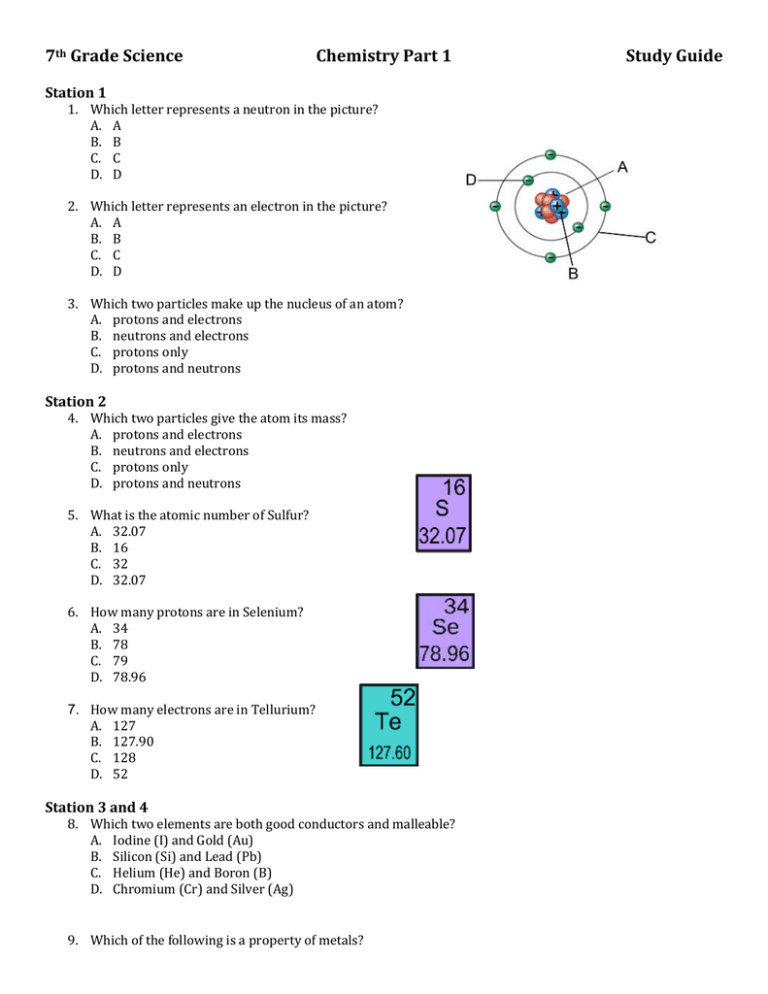7 Grade Science Chemistry Part 1 Study Guide
advertisement

7th Grade Science Chemistry Part 1 Station 1 1. Which letter represents a neutron in the picture? A. A B. B C. C D. D 2. Which letter represents an electron in the picture? A. A B. B C. C D. D 3. Which two particles make up the nucleus of an atom? A. protons and electrons B. neutrons and electrons C. protons only D. protons and neutrons Station 2 4. Which two particles give the atom its mass? A. protons and electrons B. neutrons and electrons C. protons only D. protons and neutrons 5. What is the atomic number of Sulfur? A. 32.07 B. 16 C. 32 D. 32.07 6. How many protons are in Selenium? A. 34 B. 78 C. 79 D. 78.96 7. How many electrons are in Tellurium? A. 127 B. 127.90 C. 128 D. 52 Station 3 and 4 8. Which two elements are both good conductors and malleable? A. Iodine (I) and Gold (Au) B. Silicon (Si) and Lead (Pb) C. Helium (He) and Boron (B) D. Chromium (Cr) and Silver (Ag) 9. Which of the following is a property of metals? Study Guide 7th Grade Science A. B. C. D. Chemistry Part 1 Study Guide brittle low melting point good conductor semi-conductor 10. Which of the following is a property of the Noble Gases? A. Not reactive B. Solids C. Good conductors D. Shiny 11. Which of the following is a property of nonmetals? A. poor conductors B. not reactive C. shiny D. malleable 12. As you move from left to right on the Periodic Table, in what order do the groups of elements occur? A. metal to non-metal to noble gas B. metal to metalloid to non-metal C. non-metal to metalloid to metal D. non-metal to metal to noble gas Station 5 and 6 13. Which of the following is an example of a physical property? A. ability of iron to rust B. ability of fruit to mold C. ability of salt to dissolve D. ability of food to be digested Station 7 and 8 14. A student is doing an experiment. How will she know if a chemical change has occurred? A. The size gets smaller. B. The state of matter changes. C. The shape changes. D. A new substance forms. 15. Which process involves a chemical change? A. Mixing milk and eggs B. Slicing bread C. Spreading jelly on a piece of bread D. Baking bread 16. Which of the following is an example of a physical change? A. A glass breaking B. A piece of wood burning C. Iron turning to rust D. Baking a cake



